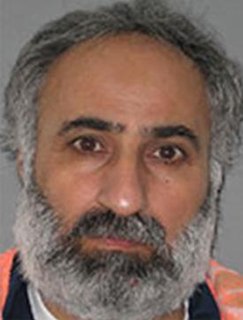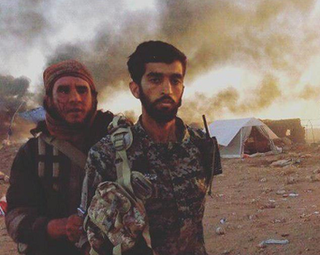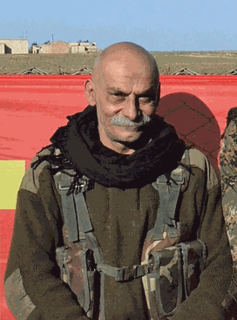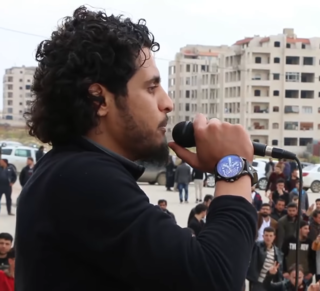 W
WThe journalists killed during the Syrian Civil War refers to the foreign war correspondents, Syrian professional journalists, and Syrian citizen journalists killed since the beginning of the civil war in 2011 and who have died as a result of their reporting. Also included in a separate form are those journalists whose whereabouts are unknown or whose disappearance is a result of their reporting and the period of their disappearance, including those cases where it is unknown as to whether or not they are casualties.
 W
WSlimane Hadj Abderrahmane was a Danish citizen who was held in extrajudicial detention in the United States Guantanamo Bay detention camps, in Cuba. His Guantanamo Internment Serial Number was 323. The US Department of Defense reports he was born on 5 August 1973, in Roskilde, Denmark. His mother is Danish and his father is Algerian.
 W
WYamin Abou-Zand, better known by his nom de guerre Abu Umar al-Almani, was a prominent German commander of the Islamic State of Iraq and the Levant. He gained notoriety by appearing in the first German ISIL propaganda video in 2015, and went on to fight for the militant organization until 2017, when he was killed in action against the Syrian Democratic Forces.
 W
WAbdulrahman Mustafa al-Qaduli, better known by his noms de guerre Abu Ala al-Afri and Abu Ali al-Anbari, was the governor for territories held by the Islamic State of Iraq and the Levant (ISIL) in Syria. Considered the ISIL second-in-command, he was viewed as a potential successor of ISIL leader Abu Bakr al-Baghdadi.
 W
WAsia Ramazan Antar (1997–2016) also known as Viyan Antar, was a Kurdish Women's Protection Units (YPJ) fighter who has become a symbol of the feminist struggle in the Rojava conflict and in the fight against ISIS by international media.
 W
WMohsen Hojaji was an Iranian military officer. He served as an Islamic Revolutionary Guard Corps (IRGC) adviser to the pro-government forces in Syria during the Syrian Civil War. He was captured by Islamic State of Iraq and Syria (ISIS) forces near al-Tanf in southeast Syria, and was beheaded two days later. ISIS published a video of his capture, a picture of which went viral among Iranians in social media. His captivity and subsequent murder received widespread reaction among the Iranian people, government, and military.
 W
WHevrin Khalaf was a Kurdish-Syrian politician and civil engineer. Khalaf served as the Secretary General of the Future Syria Party after working for many years in Rojava. She was killed by Turkish-backed Ahrar al-Sharqiya fighters near the M4 Motorway south of Tell Abyad during the 2019 Turkish offensive into north-eastern Syria, on 12 October.
 W
WFaisal Abdi Bilal Saadoun, widely known as Abu Leyla or Abu Layla, was a commander in both the Free Syrian Army and the Syrian Democratic Forces (SDF). He is regarded by many as a hero of the Rojava–Islamist conflict.
 W
WNubar Ozanyan was a Turkish-born Armenian radical communist revolutionary, who served as a commander in the militant Communist Party of Turkey/Marxist–Leninist (TKP/ML). Fighting in several conflicts for the group, he eventually died in combat against the Islamic State of Iraq and the Levant during the Battle of Raqqa.
 W
WAbdul Baset al-Sarout was a Syrian association football goalkeeper. He represented his country at the Syria U17 and Syria U20 level. He was also a prominent rebel figure in the Syrian Revolution.
 W
WHassan Shateri, also known as Hesam Khoshnevis, was a Major General of Iran's elite Revolutionary Guards Quds Force. He was a veteran of the Iran–Iraq war and head of the Iranian Committee for the Reconstruction of Lebanon after the 2006 Lebanon War, according to Iranian media. He was assassinated in February 2013.